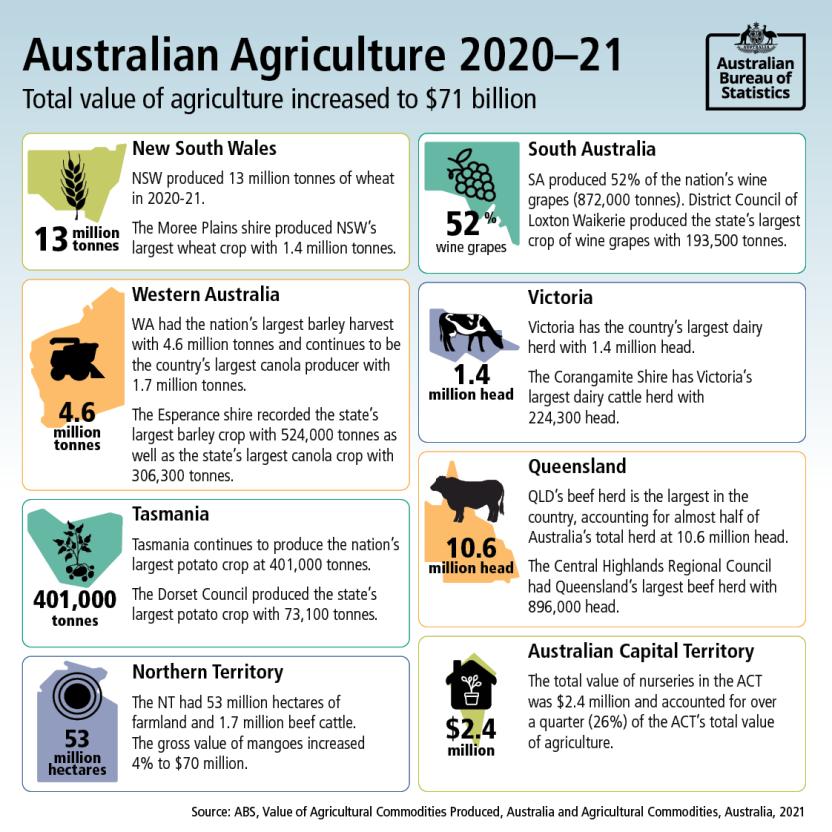Thank you to those farmers who completed their 2020-21 Agricultural Census. The Agricultural Census supports the production of vital information on agricultural production, value and water use which helps industry, business and government make informed decisions.
New data on Australian agriculture is now available on:
Value of Agricultural Commodities Produced
Latest data reveals that Australia has 387 million hectares of agricultural land. Of which, 332 million hectares is used for grazing and 32 million hectares is used for cropping.
In 2020-21 Australian agriculture saw a 17 per cent increase in value to $71 billion.
Favourable growing conditions and better access to water for irrigation resulted in dramatic increases in the production of many crops, especially ideal for wheat production. Compared with the previous year, the value of wheat grew by 99 per cent to $9.9 billion in 2020-21 with production up 120 per cent.
We also saw above average yields and record production for other crops such as barley and canola in 2020-21. The value of barley rose by 24 per cent to $3.7 billion with production up 45 per cent on the previous year. The value of canola, meanwhile rose by 114 per cent to $2.9 billion.
With drought-breaking rainfall and improved seasonal conditions, the production and value of irrigated crops such as cotton recovered from recent lows, up 451,300 tonnes to 566,000 tonnes and gross value up $1.2 billion to $1.5 billion in 2020-21.
Compared with the previous year, value of total livestock disposals fell 6 per cent. However, the value of livestock products was largely steady with a strong result for eggs (up 28 per cent to $1.1 billion) offsetting falls in wool (down 4 per cent to $2.6 billion) and milk (down 3 per cent to $4.7 billion).
Declines in the value of livestock disposals were largely due to farmers using the improved seasonal conditions and better pastures as an opportunity to rebuild their stocks. This approach saw the beef cattle herd increase 4 per cent to 22.1 million head in 2020-21 compared with the previous year. Increases were also seen in the sheep flock (up 7 per cent to 68.1 million head) and the dairy herd (up 1 per cent to 2.4 million head).
The total value of Australian agriculture increased to $71 billion in 2020-21
Image
